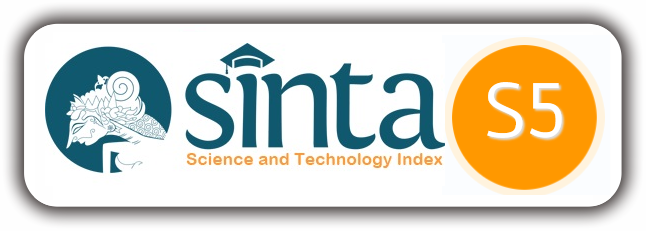Eksplorasi Kualitatif Faktor Penghambat Adopsi Teknologi Rainwater Harvesting di Daerah Rawan Kekeringan
DOI:
https://doi.org/10.59525/aij.v5i2.954Keywords:
Rainwater Harvesting; Technology Adoption; Drought-prone areasAbstract
This qualitative research aims to explore in depth the factors inhibiting the adoption of Rainwater Harvesting (RWH) technology in drought-prone communities, focusing on non-technical aspects that are socio-cultural, perceptual, and psychological. This study uses a phenomenological approach through qualitative methods. Data was collected from communities in drought-prone areas through in-depth interviews and Pumped Group Discussions (FGDs). Data analysis was carried out thematically to identify key patterns and themes. This study reveals five main themes as inhibitors of RWH adoption: (1) Public perception that rainwater is "dirty" and unfit for consumption, while groundwater and PDAM water are considered "clean" and guaranteed; (2) Economic constraints and priority allocation of family funds; (3) Perception of technological complexity and concerns about treatment; (4) Institutional weaknesses and social dynamics in management; and (5) Beliefs and cultural norms that view drought as a destiny. These findings suggest that the biggest obstacle is not in the technical aspect, but in the construction of entrenched social perceptions, values, and norms. The success of community service programs in implementing civil engineering technology such as RWH is highly dependent on understanding the socio-cultural context of the community. An approach that focuses only on technical solutions will fail to guarantee adoption and sustainability. A holistic, participatory, and culturally sensitive intervention strategy is needed, which not only provides infrastructure but also builds strong local awareness, confidence, and institutions to create sustainable water resilience.
Downloads
References
Braun, V., & Clarke, V. (2006). Using thematic analysis in psychology. Qualitative Research in Psychology, 3(2), 77-101.
Creswell, J. W., & Poth, C. N. (2018). Qualitative inquiry and research design: Choosing among five approaches (4th ed.). SAGE Publications.
Handayani, W., & Suryanto, H. (2020). Community perception and adoption of rainwater harvesting systems in arid regions: A qualitative study from Indonesia. Journal of Water, Sanitation and Hygiene for Development, 10(3), 450-462.
Rogers, E. M. (2003). Diffusion of innovations (5th ed.). Free Press.
Suharto, B., & Pratiwi, A. D. (2022). Faktor sosio-kultural dalam keberlanjutan program infrastruktur pedesaan: Studi kasus teknologi tepat guna air bersih. Jurnal Teknik Sipil dan Perencanaan, 24(1), 45-58.
United Nations. (2019). World Water Development Report 2019: Leaving No One Behind. UNESCO.
Widodo, S., & Fitriani, D. (2021). Pendekatan fenomenologi dalam memahami resistensi masyarakat terhadap inovasi teknologi lingkungan. Jurnal Sosiologi Pedesaan, 15(2), 112-125.
World Health Organization (WHO). (2017). Guidelines for drinking-water quality: fourth edition incorporating the first addendum. WHO Press.
Yin, R. K. (2018). Case study research and applications: Design and methods (6th ed.). SAGE Publications.
Downloads
Published
How to Cite
Issue
Section
License
Copyright (c) 2025 Syahrul Rezi Ismail, Mutmainnah Mutmainnah, Irmawaty Irmawaty, Aisyah Madiana Ali

This work is licensed under a Creative Commons Attribution 4.0 International License.








